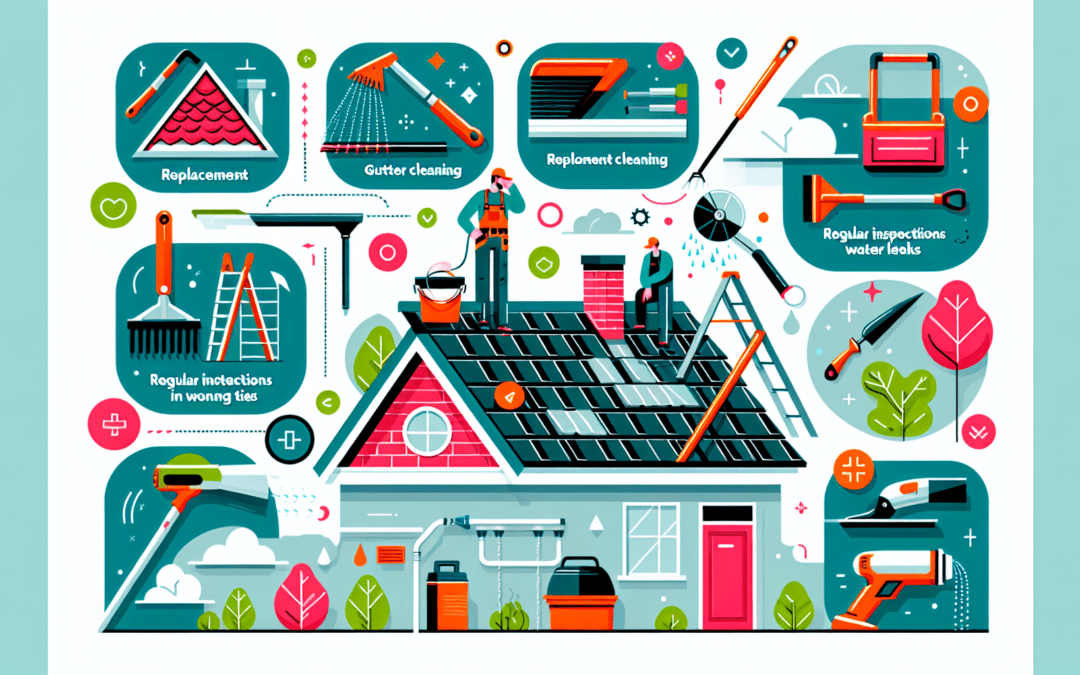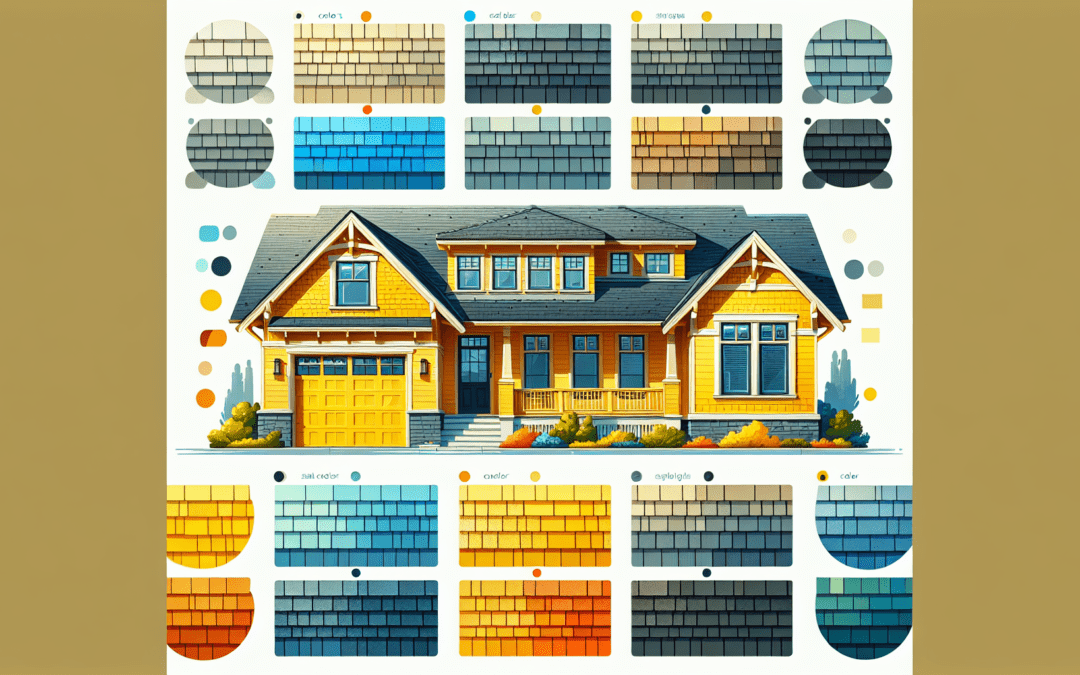
Apr 25, 2024 | Contractors, Maintenance, Roofing
Having a damaged roof can be really stressful. It might be from a storm, fallen tree, or something else. Whatever the reason, it’s important to know how to file a claim with your insurance company to get it fixed. Here are the steps you should follow:
Step 1: Check Your Insurance Policy
First things first, grab your insurance policy and read it carefully. You need to know what kind of roof damage your insurance covers. Not all policies cover every type of damage. Also, look for how much time you have to file a claim after the damage happens.
Step 2: Document the Damage
Next, it’s time to take lots of pictures and video of the damage. This helps show your insurance company exactly what happened. Try to get clear shots from different angles. If you have “before” pictures of your roof, that’s even better because you can show the difference.
Step 3: Temporarily Fix Your Roof
While you’re waiting for your insurance company to help, you might need to protect your house from more damage. This can mean covering holes in the roof with a tarp or something similar. But remember, keep your receipts for any money you spend, because you might be able to get that money back from your insurance.
Step 4: Contact Your Insurance Company
Now, it’s time to get in touch with your insurance company. Tell them what happened and that you want to file a claim. They’ll guide you on the next steps, which usually include filling out some paperwork and possibly meeting with an insurance adjuster.
Step 5: Meet the Insurance Adjuster
Your insurance company might send out an adjuster to look at the damage. This person checks out the roof to see how bad the damage is and decides how much money the insurance company should give you to fix it. Make sure to show the adjuster all the damage.
Step 6: Get Estimates from Contractors
While you’re waiting for the adjuster’s report, start looking for a good roofing contractor. It’s smart to get estimates from a few different ones. This way, you’ll have a good idea of how much the repair should cost. You can use these estimates when talking to your insurance company about the amount of money they’ll give you.
Step 7: Finalize the Claim and Start Repairs
After the insurance company agrees on the cost of repairs, you’ll finally get the money to fix your roof. Choose your contractor and get your roof fixed. Sometimes the insurance company might pay the contractor directly; other times, they’ll give you the money to pay the contractor.
Step 8: Keep All Your Records
Last, make sure to keep all the paperwork and receipts related to the roof repair and your insurance claim. This includes your original insurance policy, repair estimates, and any communication with your insurance company. These records can be very important if there are any questions or problems later on.
Remember, it’s really important to act quickly when your roof is damaged. Following these steps can make the process of filing a claim smoother and help you get your roof fixed as soon as possible.

Feb 2, 2024 | Maintenance, Roofing
Introduction to Spring Roof Maintenance
As spring arrives, it brings with it the necessity for homeowners to carry out maintenance checks on their roofs. The winter season often leaves behind damages that can escalate if not addressed timely. Spring roof maintenance is vital not only to repair winter damages but also to prepare your roof for the potentially harsh summer weather ahead. Here are seven essential tips to help ensure your roof remains in optimal condition.
1. Conduct a Thorough Inspection
The first step in spring roof maintenance is to conduct a thorough inspection of your roof. This can either be done personally, if safety and conditions allow, or by hiring a professional roofing contractor. Look for missing, damaged, or aging shingles and check for signs of moss or algae growth. Be sure to inspect metal areas for rust and ensure all seals and joints, especially around chimneys and skylights, are secure without gaps or cracks.
Key areas to inspect:
- Shingles
- Chimney
- Gutters
- Downspouts
2. Clean Gutters and Downspouts
Cleaning out your gutters and downspouts is a vital component of roof maintenance. Accumulated debris from the winter such as leaves, twigs, and other materials can block water flow, causing potential water damage to your roof and siding. Ensure that the water can flow freely and consider installing gutter guards to reduce the amount of debris that can accumulate in the future.
3. Remove Debris
Apart from gutters, other parts of your roof may also gather debris, which can retain moisture leading to mold and mildew. Safely remove branches, leaves, and other debris from your rooftop. This not only prevents damage but also aids in revealing hidden problems that need to be addressed.
4. Look for Signs of Animal or Insect Infestation
Spring often brings animals and insects out of hibernation. Birds, squirrels, raccoons, or insects like termites might find your roof ideal for nesting. Check for any signs of infestation such as nests, droppings, or chewing. Addressing these early on can prevent more severe damage to your roof structure.
5. Replace Damaged or Loose Shingles
If your inspection reveals any loose or damaged shingles, it’s important to replace them immediately. This not only prevents water from seeping into your home but also strengthens your roof’s overall structure. Be sure to match them with existing shingles to maintain uniformity and aesthetic appeal.
6. Apply Roof Protectant
After cleaning and repairing your roof, applying a protectant can help extend its life. There are various products available that can provide a protective barrier against UV rays, moisture, and other environmental damages. Make sure to select a protectant suitable for your roofing materials.
7. Schedule Professional Inspections
Finally, even if you’re diligent in your spring roof maintenance, some damages may be subtle and difficult to detect. Professional roofers have the tools and knowledge to identify such issues. A professional inspection at least once a year ensures that any hidden damages are appropriately addressed, helping to extend the lifespan of your roof.
Conclusion
Maintaining your roof this spring is essential for prolonging its life and ensuring it remains effective in protecting your home. By conducting a comprehensive inspection, cleaning gutters, removing debris, addressing damage, and preventing future issues, you can keep your roof in top condition. Remember, a little prevention goes a long way in saving time and money on future repairs.

Jan 9, 2024 | Maintenance, Materials, Roofing
Understanding Concrete Roof Tiles
Concrete roof tiles are a popular choice for homes because they are durable, strong, and can look really nice. Just like picking out a new game or phone, knowing what makes a good concrete roof tile is important. Here, we’ll talk about the key things to look for when choosing concrete roof tiles for a house.
1. Weight
Concrete roof tiles are heavier than other types of roofing, like metal or asphalt shingles. Before choosing them, it’s important to make sure the house’s structure can support the weight. The weight of concrete roof tiles can vary, but knowing how much they weigh will help ensure the house is safe and secure.
2. Color and Style
Just like how we choose the color and style of our clothes, we can pick the color and style of our roof tiles too. Concrete tiles come in a variety of colors and shapes, such as flat, curved, or wavy, so you can pick the perfect look to match your home. It’s also key to remember that the color might fade a bit over time because of the sun.
3. Durability
One of the best things about concrete roof tiles is that they’re really strong. They can last a long time, sometimes more than 50 years, if they’re taken care of properly. They can stand up to heavy rain, wind, and even fire, which makes them a great choice for keeping your home safe.
4. Porosity
Porosity might sound complicated, but it’s just a fancy word for how much water a tile can soak up. Tiles with high porosity can absorb a lot of water, which isn’t great because it can lead to mold or damage in really rainy places. On the other hand, tiles with low porosity are better at keeping water out.
5. Energy Efficiency
Concrete roof tiles can also help keep your home cooler in the summer and warmer in the winter. This is because they’re good at insulating, or keeping the temperature inside your home steady. Choosing tiles that keep your home more comfortable can also help save money on heating and cooling bills.
6. Maintenance
Maintenance means keeping the roof tiles in good shape over time. Fortunately, concrete tiles don’t need a lot of upkeep. Occasionally, you might need to replace broken tiles or clean them to get rid of dirt or algae. Knowing what maintenance is needed can help you keep your roof looking nice for a long time.
In conclusion, when picking concrete roof tiles, think about their weight, color and style, durability, porosity, energy efficiency, and maintenance needs. Choosing the right tiles can make your home look great and ensure it stays safe and comfortable for years to come.

Nov 16, 2023 | Construction, Maintenance, Sustainability
The Basics of Construction Services
At its core, construction services encompass a broad range of tasks and responsibilities necessary to plan, build, and maintain a physical structure. These services can range from residential building processes to massive industrial projects, each requiring a unique set of skills, methodologies, and materials. The foundation of construction services revolves around three major phases: pre-construction planning, construction execution, and post-construction maintenance. Successful projects demand meticulous planning, efficient execution, and ongoing maintenance to ensure longevity and functionality of the structures.
Pre-construction Planning
Pre-construction is the phase where ideas take shape. This step involves feasibility studies, site investigation, environmental assessments, budgeting, and securing the necessary permits and approvals. Effective pre-construction planning can significantly reduce risks, save costs, and ensure that the project’s timeline is realistically set.
Construction Execution
This phase is where plans are turned into reality. Construction execution requires a coordinated effort among various professionals including architects, engineers, construction managers, and skilled tradespeople. Activities during this phase include site preparation, foundation work, structural framing, installation of electrical and plumbing systems, and interior and exterior finishes.
Post-Construction Maintenance
The third phase ensures that the newly built structure remains safe, functional, and aesthetically pleasing. Post-construction services might include regular inspections, repairs, and updates to the building to comply with codes and regulations. This phase is essential for prolonging the life of the building and maximizing its value for users and owners alike.
Current Trends in Construction Services
The construction industry is undergoing significant transformations due to advancements in technology, shifts in societal needs, and an increased focus on sustainability. These changes have sparked new trends that are shaping the future of construction services.
Green Building and Sustainability
Environmental considerations have become a priority in the construction sector. Green building practices aim to minimize the environmental impact of buildings by efficiently using energy, water, and other resources. Sustainable construction also involves selecting eco-friendly materials and designing for reduced waste. Green certifications, such as LEED (Leadership in Energy and Environmental Design), are increasingly sought after, signaling a building’s environmental performance to stakeholders.
Technological Integration
The integration of technology into construction processes is revolutionizing how projects are planned, executed, and managed. Tools such as Building Information Modeling (BIM) allow for the creation of detailed digital representations of buildings, facilitating better planning and collaboration among stakeholders. The use of drones and robotics for site surveying and materials handling is improving safety and efficiency on construction sites. Moreover, wearable technology and augmented reality (AR) are enhancing the capabilities of workers on the ground.
Modular and Prefabricated Construction
Modular and prefabricated construction methods are gaining popularity due to their potential for reducing construction time and waste. This approach involves manufacturing parts of a building in a factory setting and then transporting them to the construction site for assembly. These techniques not only accelerate the construction process but also contribute to better quality control and reduced environmental impact.
As the construction industry continues to evolve, staying informed about these fundamentals and trends is crucial for industry professionals and stakeholders looking to navigate the complexities of modern construction projects. The future promises continued innovation and adaptation, leading to more efficient, sustainable, and technologically advanced construction services.

Nov 8, 2023 | Maintenance, Roofing
Maintaining your roof is an indispensable part of home care. A well-maintained roof not only protects your home from the elements but also extends the lifespan of your roofing materials and can prevent costly repairs down the line. Here are some essential tips for effectively maintaining your roof.
Regular Inspections
Perform regular inspections of your roof to catch issues before they escalate. It’s advisable to inspect your roof at least twice a year, ideally in the spring and fall. Look for missing or damaged shingles, signs of wear around roof fixtures, and any debris or overhanging branches that could pose a risk.
Clean Your Gutters
Clogged gutters can lead to water backup which can damage both your roof and the interior of your home. Make sure to clean your gutters at least twice a year to ensure water can flow freely away from your home.
Trim Overhanging Branches
Overhanging branches not only drop leaves and debris onto your roof, contributing to blockages in your gutter, but they can also cause physical damage during severe weather. Trim any branches that hang over your roof to reduce these risks.
Maintain a Clean Roof
Debris such as leaves, twigs, and other materials can collect on your roof, trapping moisture and potentially leading to rot and mold. It’s important to keep your roof clean, especially after storms or during fall when trees are shedding their leaves.
Prevent Ice Dam Formation
In colder climates, it’s essential to prevent the formation of ice dams on your roof. Ice dams can create significant water damage as they melt. Proper attic insulation and ventilation can help prevent these issues by minimizing the amount of ice or snow that melts and refreezes at the roof’s edges.
Attend to Repairs Promptly
If an inspection reveals any damage, it’s crucial to address these issues promptly. Small problems like a missing shingle or a minor leak can quickly escalate, leading to more significant damage that’s more expensive to repair.
Seek Professional Assistance
While many aspects of roof maintenance can be handled by a homeowner, certain tasks require professional attention. If you’re unsure about a particular issue or if a repair seems beyond your capabilities, it’s best to consult with a professional roofing contractor. They can provide a thorough inspection and carry out repairs or maintenance as needed.
Conclusion
Maintaining your roof is a key aspect of home care that can save you from costly repairs and extend the lifespan of your roof. By performing regular inspections, keeping your gutters clean, managing overhanging branches, maintaining a clean roof, preventing ice dam formation, addressing repairs promptly, and seeking professional assistance when necessary, you can ensure your roof remains in top condition for years to come.

Nov 3, 2023 | Contractors, Maintenance, Roofing
Have you ever looked at your roof and wondered if it’s time for some care or maybe even a complete makeover? Choosing the right person to fix or replace your roof can seem hard. But don’t worry! Here are easy steps to help you pick the best roofer for your home.
1. Know What You Need
Before calling anyone, it’s good to have an idea of what job needs to be done. Do you have missing tiles, a leak, or do you need a whole new roof? Understanding the problem will help you communicate better with the roofer and get a more accurate estimate.
2. Look for Experienced Roofers
Experience matters a lot when it comes to roofing. Look for companies or individuals who have been in business for several years. They’ll likely have a portfolio of previous work that you can check to see if their quality meets your expectations.
3. Check Reviews and References
Online reviews on sites like Google or Yelp can give you a good idea of what other people thought of the roofer’s work. Don’t stop there, though. Ask the roofer for references and call them to ask about their experience. It’s a great way to find out how reliable and professional the roofer is.
4. Make Sure They Are Licensed and Insured
Roofing can be dangerous, and accidents happen. Make sure any roofer you hire has the proper license to work in your area and insurance to cover any accidents that might occur. This protects you and them while they’re working on your home.
5. Get Multiple Quotes
It’s smart to talk to several roofers and get quotes from each one. This doesn’t just help you understand the typical cost, but it also gives you a chance to meet them and see who you feel most comfortable with. Remember, the lowest price isn’t always the best choice. Balance cost with the quality of work and materials.
6. Ask About Warranties
Good roofers often offer warranties on their work, in addition to any manufacturer warranties on materials. Make sure you understand what is covered and for how long. This can give you peace of mind and protect you if something goes wrong down the line.
7. Communication is Key
Pick a roofer who communicates well. They should be easy to reach, answer your questions clearly, and keep you updated on their progress. Good communication can prevent misunderstandings and ensure the project goes smoothly.
Conclusion
Finding the right roofer takes a bit of effort, but it’s worth it to know your home is in good hands. By following these steps, you’ll be better equipped to make an informed decision. Remember, your roof protects your home and everything in it; it’s essential to choose someone who will take care of it as you would.






